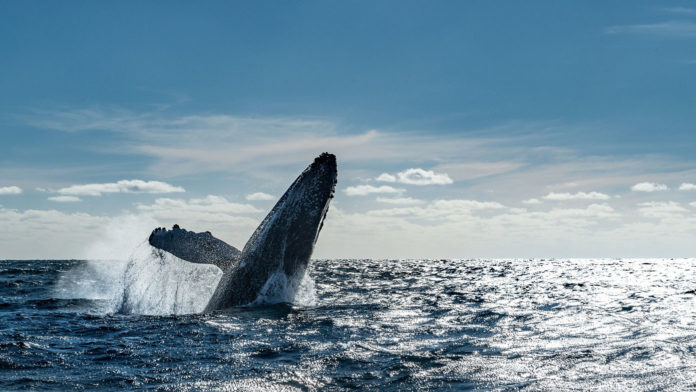Whales are incredible swimmers, but until recently, how they manage to do it without damaging their brains has been a mystery.
Each time a whale moves their tail in a powerful downstroke, the motion compresses their organs, most of which sit under their spine. This triggers locomotion-induced spikes in blood pressure that could damage their delicate brain.
It’s similar to what we see in horses, who also experience blood pressure spikes with every stride as they run. The difference is that they can protect their brains by timing their breathing to compensate.
Being underwater as they dive, whales don’t have this luxury.
Zoologists Margo Lillie and Robert Shadwick at the University of British Columbia hypothesized that whales and other cetaceans may be able to make use of special anatomy instead. Their study was published in Science.
Cetaceans have massive networks of blood vessels around their brain and spine called retia mirabilia (latin for ‘wonderful nets’). All blood that flows through the brain flows through them. In these networks, arteries actually pass through veins.
These direct connections may allow a pulse transfer mechanism that equalizes the pressure difference that would otherwise happen as they swim.
The researchers used a computational model to explore this possibility. They based their model on the anatomy from 11 species of cetaceans, gathered through years of dissections. Their model calculated that a whale’s retia mirabilia could protect them from 97 percent of systemic pulsatility that comes from swimming.
Another point that backs up their hypothesis is that other animals that dive, like seals, lack cranial retia mirabilia. But unlike cetaceans, they move their tails side to side when they swim, and so they don’t experience the same swings in blood pressure. If the pulse transfer mechanism is true, that would explain why seals don’t need them.
Cetaceans have an incredible story of evolution, making any new information about their anatomy fascinating to learn. Pulse transfer is a plausible explanation for an old mystery. If true, these ‘wonderful nets’ are what allow cetaceans to safely swim while holding their breath so that they can live fully aquatic lives.










































